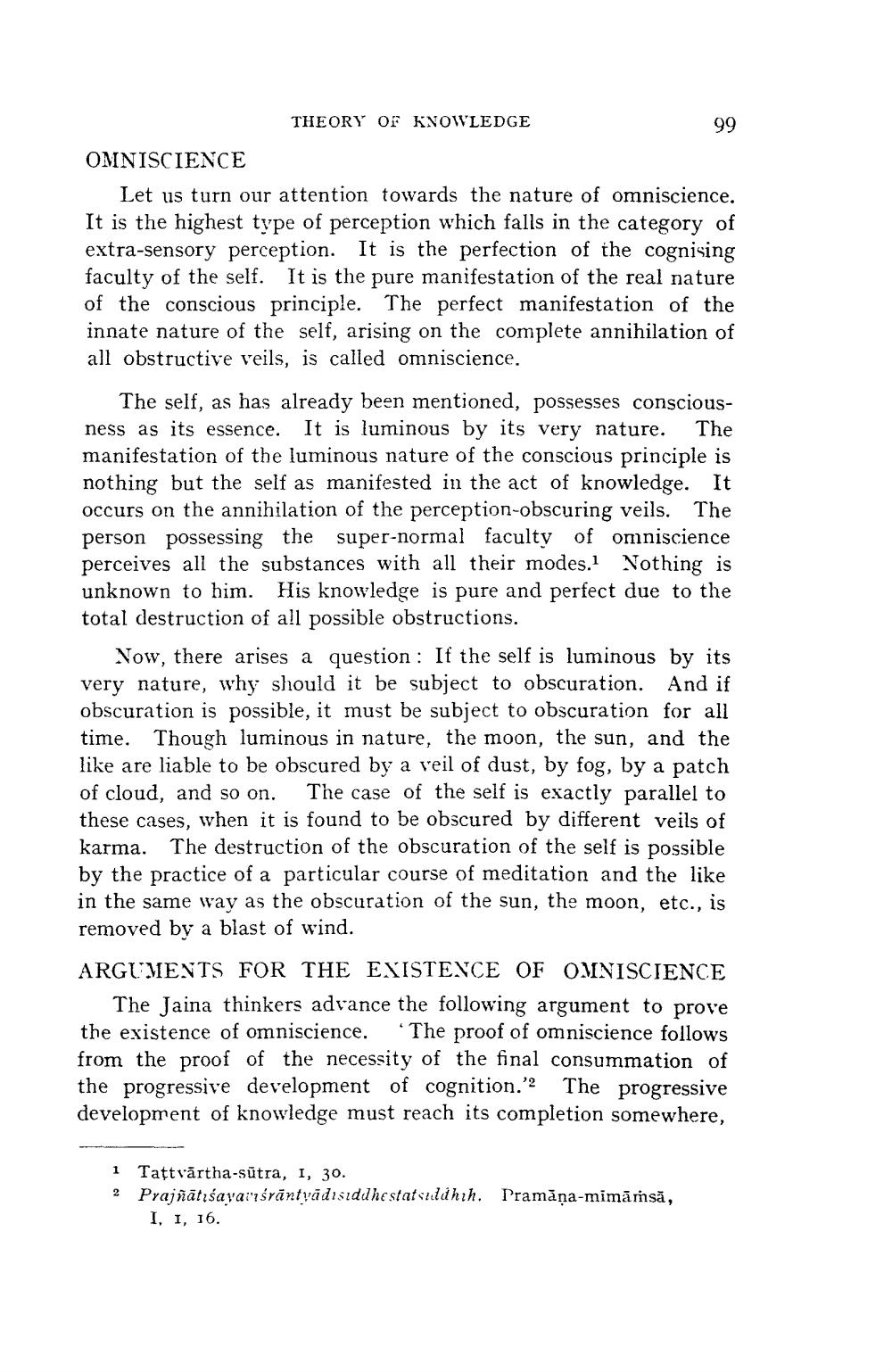________________
THEORY OF KNOWLEDGE
99
OMNISCIENCE
Let us turn our attention towards the nature of omniscience. It is the highest type of perception which falls in the category of extra-sensory perception. It is the perfection of the cognising faculty of the self. It is the pure manifestation of the real nature of the conscious principle. The perfect manifestation of the innate nature of the self, arising on the complete annihilation of all obstructive veils, is called omniscience.
The self, as has already been mentioned, possesses consciousness as its essence. It is luminous by its very nature. The manifestation of the luminous nature of the conscious principle is nothing but the self as manifested in the act of knowledge. It occurs on the annihilation of the perception-obscuring veils. The person possessing the super-normal faculty of omniscience perceives all the substances with all their modes. Nothing is unknown to him. His knowledge is pure and perfect due to the total destruction of all possible obstructions.
Now, there arises a question: If the self is luminous by its very nature, why should it be subject to obscuration. And if obscuration is possible, it must be subject to obscuration for all time. Though luminous in nature, the moon, the sun, and the like are liable to be obscured by a veil of dust, by fog, by a patch of cloud, and so on. The case of the self is exactly parallel to these cases, when it is found to be obscured by different veils of karma. The destruction of the obscuration of the self is possible by the practice of a particular course of meditation and the like in the same way as the obscuration of the sun, the moon, etc., is removed by a blast of wind.
ARGUMENTS FOR THE EXISTENCE OF OMNISCIENCE
The Jaina thinkers advance the following argument to prove the existence of omniscience. “The proof of omniscience follows from the proof of the necessity of the final consummation of the progressive development of cognition.'? The progressive development of knowledge must reach its completion somewhere,
1 Tattvārtha-sútra, I, 30. 2 Prajñātrśavaizsāntvadisiddhestatunidhih. Pramāna-mimāṁsā,
I, I, 16.




